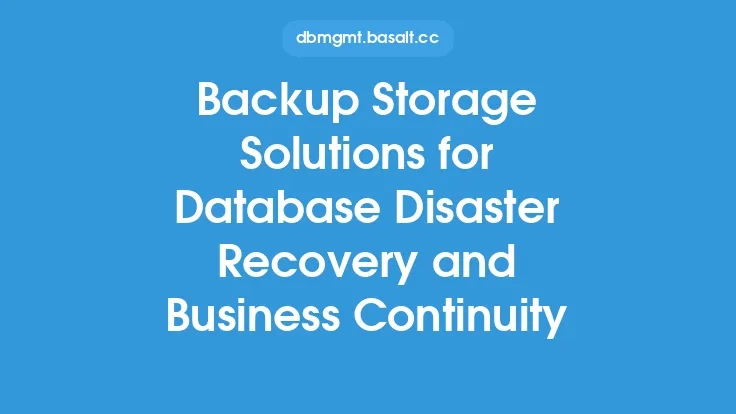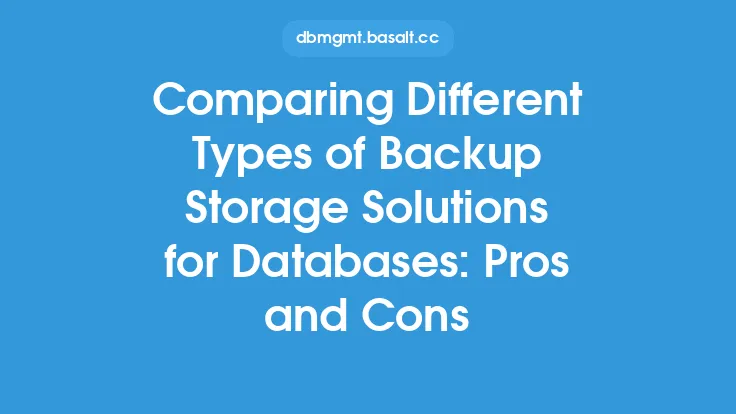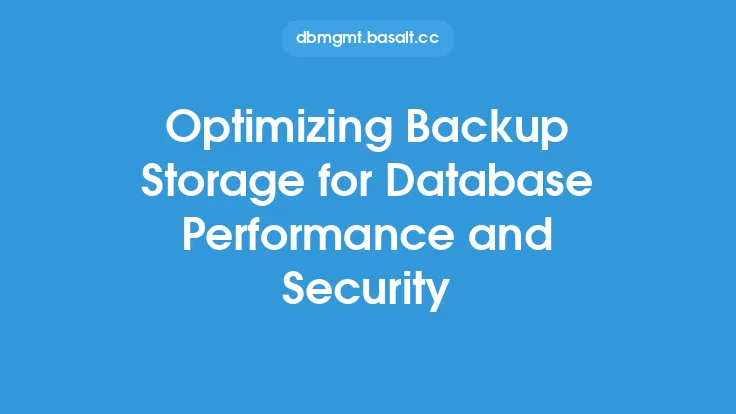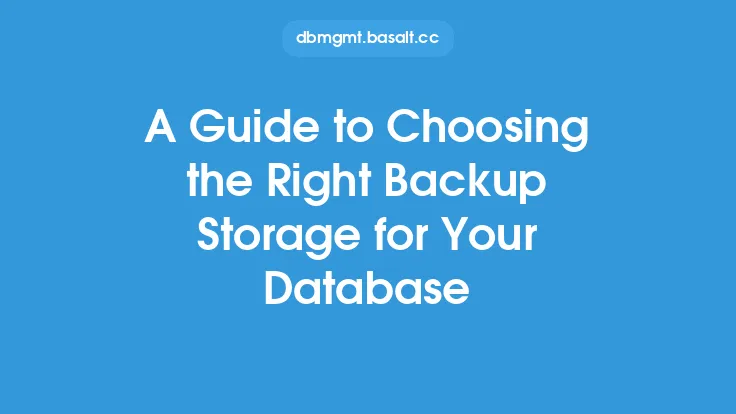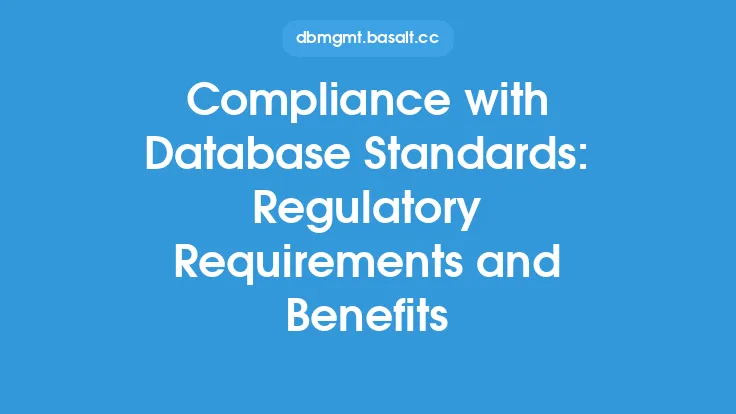When it comes to database management, ensuring compliance with regulatory requirements is crucial to avoid legal and financial repercussions. One critical aspect of database compliance is the implementation of a robust backup storage solution. This solution must not only ensure the integrity and availability of database data but also meet specific regulatory requirements. In this article, we will delve into the key considerations for evaluating backup storage solutions for database compliance and regulatory requirements.
Introduction to Database Compliance and Regulatory Requirements
Database compliance and regulatory requirements vary depending on the industry, location, and type of data being stored. For instance, organizations handling sensitive financial information must comply with regulations such as the Payment Card Industry Data Security Standard (PCI DSS) and the Gramm-Leach-Bliley Act (GLBA). Similarly, healthcare organizations must adhere to the Health Insurance Portability and Accountability Act (HIPAA) when handling protected health information (PHI). These regulations often mandate specific requirements for data backup, storage, and retention, making it essential to choose a backup storage solution that can meet these demands.
Key Considerations for Evaluating Backup Storage Solutions
When evaluating backup storage solutions for database compliance and regulatory requirements, several key factors must be considered. First and foremost, the solution must ensure the integrity and authenticity of backed-up data. This can be achieved through the use of checksums, digital signatures, and other data validation techniques. Additionally, the solution should provide robust access controls, including encryption, authentication, and authorization mechanisms, to prevent unauthorized access to sensitive data.
Another critical consideration is data retention and storage capacity. Regulatory requirements often dictate how long data must be retained, and the backup storage solution must be able to accommodate these requirements. This may involve implementing a tiered storage architecture, where less frequently accessed data is stored on slower, more cost-effective media, while more frequently accessed data is stored on faster, more expensive media.
Data Encryption and Access Controls
Data encryption and access controls are essential components of a backup storage solution designed for database compliance and regulatory requirements. Encryption ensures that even if unauthorized parties gain access to the backed-up data, they will be unable to read or exploit it. Access controls, on the other hand, prevent unauthorized parties from accessing the backed-up data in the first place. This can be achieved through the use of secure authentication protocols, such as Kerberos or multi-factor authentication, and authorization mechanisms, such as role-based access control (RBAC) or attribute-based access control (ABAC).
Backup and Recovery Processes
The backup and recovery processes are also critical components of a backup storage solution. The solution should be able to perform backups at regular intervals, without disrupting database operations, and should be able to recover data quickly and efficiently in the event of a disaster or data loss. This may involve implementing a backup strategy that includes full, incremental, and differential backups, as well as a disaster recovery plan that outlines procedures for restoring data and resuming database operations.
Compliance and Regulatory Requirements for Backup Storage
Different industries and regulatory bodies have specific requirements for backup storage. For example, the PCI DSS requires that organizations store sensitive authentication data, such as card validation codes and magnetic stripe data, securely, and that they implement a process for regularly backing up and storing this data. Similarly, HIPAA requires that healthcare organizations implement policies and procedures for backing up and storing electronic protected health information (ePHI), and that they ensure the confidentiality, integrity, and availability of this data.
Auditing and Reporting
Auditing and reporting are essential components of a backup storage solution designed for database compliance and regulatory requirements. The solution should be able to track and record all access to backed-up data, as well as any changes made to this data. This information can then be used to generate reports and demonstrate compliance with regulatory requirements. Additionally, the solution should be able to provide real-time alerts and notifications in the event of a security incident or other issue that may impact the integrity or availability of backed-up data.
Best Practices for Implementing a Backup Storage Solution
When implementing a backup storage solution for database compliance and regulatory requirements, several best practices should be followed. First and foremost, the solution should be designed with security and compliance in mind from the outset. This may involve implementing a secure architecture, including firewalls, intrusion detection and prevention systems, and other security controls. Additionally, the solution should be regularly tested and validated to ensure that it is functioning as expected and that it can meet regulatory requirements.
Conclusion
In conclusion, evaluating backup storage solutions for database compliance and regulatory requirements is a complex and critical task. The solution must ensure the integrity and availability of database data, while also meeting specific regulatory requirements. By considering key factors such as data encryption and access controls, backup and recovery processes, and auditing and reporting, organizations can choose a backup storage solution that meets their compliance and regulatory needs. Additionally, by following best practices for implementing a backup storage solution, organizations can ensure that their solution is secure, reliable, and compliant with regulatory requirements.
